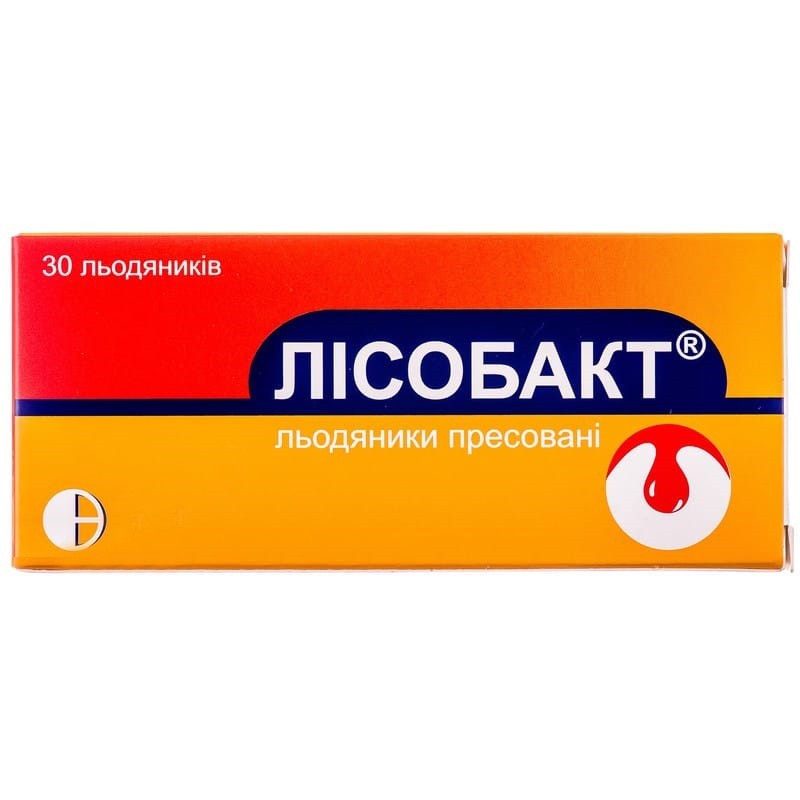



 Secure and encrypted payment processing
Secure and encrypted payment processing We ship to over 40 countries including the USA, UK, Europe, Australia and Japan
We ship to over 40 countries including the USA, UK, Europe, Australia and Japan Guaranteed refund or reship if you haven't received your order
Guaranteed refund or reship if you haven't received your orderLisobact is an antiseptic that is used for local treatment in dentistry and otolaryngology.
Lysozyme is a mucopolysaccharide, effective against gram-positive bacteria, due to the ability to convert insoluble polysaccharides of the cell membrane into soluble mucopeptides. Also effective against gram-negative bacteria, viruses and fungi. Lysozyme has a local anti-inflammatory effect and increases the nonspecific resistance of the body.
Pyridoxine has a protective effect on the mucous membrane of the oral cavity and exhibits anti-aphthous effect.
Pyridoxine is rapidly absorbed in the digestive tract, its biologically active form binds to blood plasma proteins and is deposited in the muscles, liver, central nervous system and other body tissues. Pyridoxine crosses the placental barrier and is excreted in breast milk. It is metabolized in the liver and excreted in the urine in the form of 4-pyridoxic acid.
After metabolic disintegration, lysozyme is excreted in the urine.
Infectious and inflammatory diseases of the oral mucosa and throat: Vincent’s tonsillitis, acute and chronic tonsillitis, pharyngitis, stomatitis, aphthous stomatitis, herpetic stomatitis, erosion of the oral mucosa of various etiologies; in the postoperative period (after tonsillectomy, cryodestruction of the tonsils).
The tablets should be dissolved like lozenges, holding them as long as possible in the oral cavity. children aged 3–7 years: dissolve 1 tablet 3 times a day; 7-12 years: 1 tablet 4 times a day. adults and children over the age of 12 years: 2 tablets 3-4 times a day. treatment duration is 8 days. if necessary, after consulting a doctor, treatment can be extended.
Hypersensitivity to any component of the drug.
In some cases, allergic reactions are possible.
From the immune system: anaphylactic shock, anaphylactic reactions, Quinckes edema.
On the part of the skin: urticaria, rash, itching, photosensitivity.
If an allergic reaction to the drug occurs, its use should be discontinued. Lysobact is intended for resorption, do not swallow the tablet for resorption. the drug contains lactose, therefore, patients with a rare hereditary form of galactose intolerance, lactase deficiency or glucose-galactose malabsorption syndrome should not use the drug.
During pregnancy and breastfeeding. Lisobact can be used during pregnancy and lactation.
Children. The drug is not used in children under the age of 3 years.
It does not affect the reaction rate when driving vehicles and working with other mechanisms.
The therapeutic effect of antibacterial drugs has been enhanced with simultaneous use with lisobact. lysozyme increases the effectiveness of antibacterial drugs such as penicillin, chloramphenicol.
Isoniazid, penicillamine, pyrazinamide, hydralazine, immunosuppressants, estrogens (including oral contraceptives containing estrogens) can increase the need for pyridoxine, since they act as antagonists of the latter or increase its renal excretion.
Pyridoxine hydrochloride enhances the decarboxylation of levodopa in peripheral tissues and reduces its effectiveness in the treatment of Parkinsons disease.
Not described. overdose symptoms (peripheral neuropathy, myodystrophy, increased manifestations of adverse reactions) can occur after the use of pyridoxine in high doses, significantly higher than therapeutic.
At a temperature not exceeding 25 ° C.